Infographic: How much have NATO members spent on Ukraine?
Since Russia’s invasion of Ukraine, the 30 members of the military alliance have committed at least $80bn worth of military, humanitarian and financial aid to Kyiv.
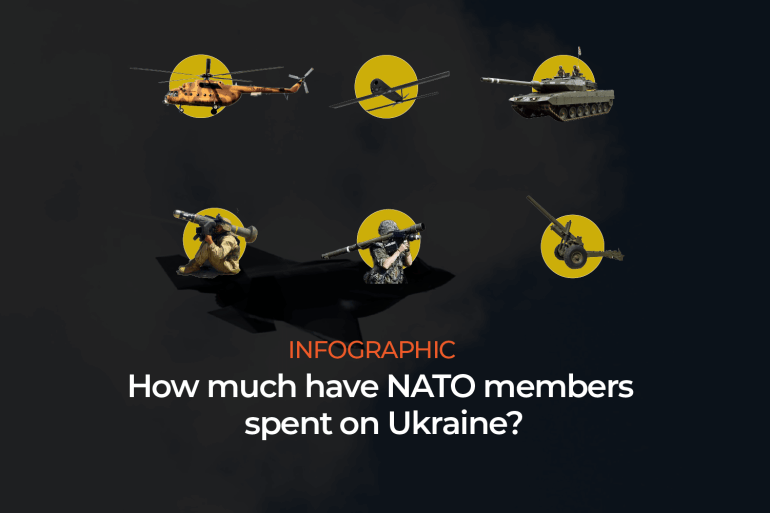
Just days before the first anniversary of Russia’s invasion of Ukraine, there are growing signs that a major new Russian offensive has already begun.
“We see how they [Russia] are sending more troops, more weapons, more capabilities,” NATO chief Jens Stoltenberg said on Monday.
Keep reading
list of 4 itemsUkraine agriculture minister released on bail in $7m corruption case
Russia-Ukraine war: List of key events, day 792
Risk of military incidents on Belarus-Ukraine border quite high: Lukashenko
Russia has accused the United States-led military alliance of “direct and growing” involvement in the conflict by providing the Ukrainian government with tens of billions of dollars worth of military assistance, including battle tanks, over the past year.
In his comments to reporters ahead of a NATO defence ministers’ meeting, Stoltenberg said the issue of supplying combat aircraft was on the table but stressed that such a development would not make member countries part of the war.
NATO history and expansion
NATO, the acronym for the North Atlantic Treaty Organization, is the world’s largest military alliance.
It was founded in 1949 by 12 member states – Belgium, Canada, Denmark, France, Iceland, Italy, Luxembourg, the Netherlands, Norway, Portugal, the United Kingdom and the US – with the aim of curbing Soviet expansion and encouraging political integration in Europe.
Between 1950 and 1999, seven more countries – Greece, Turkey, West Germany, Spain, the Czech Republic, Hungary and Poland – joined the alliance.
The expansion continued in 2004 when seven Eastern European states – Bulgaria, Estonia, Latvia, Lithuania, Romania, Slovakia and Slovenia, joined the military bloc. Of those, all but Slovenia were part of the Warsaw Pact – a defence treaty created in 1955 between the Soviet Union and seven satellite states.
Today, NATO comprises 30 nations. Only six members of the 27-country European Union (EU) are not NATO members: Austria, Cyprus, Finland, Ireland, Malta and Sweden.
Russian President Vladimir Putin has frequently referred to NATO’s eastward enlargement as a reason for the conflict in Ukraine.
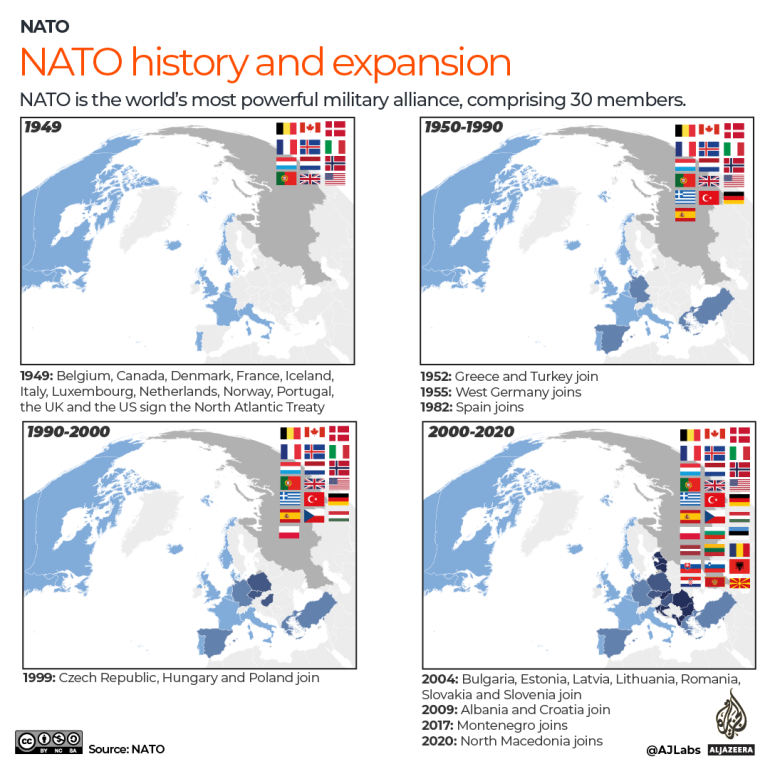
NATO’s 2023 budget
Every year, NATO sets its military and civil budgets, with all member countries pledging to contribute to the budget based on a cost-sharing formula derived from the gross national income of each country.
NATO members have committed a minimum of two percent of their gross domestic product (GDP) to defence spending to continue to ensure the alliance’s military readiness, but most countries have over the years been missing the target.
For 2023, the military budget was set at 1.96 billion euros ($2.10bn), representing a 25.8 percent increase compared with last year.
The US and Germany have pledged to equally contribute the highest percentage to the military budget, together totalling more than 30 percent of the alliance’s funds.

Sweden and Finland’s bid to join NATO
On May 16, 2022, Sweden officially applied to join NATO. Two days later, Finland followed suit.
On July 5, NATO ambassadors signed the accession protocols to allow Sweden and Finland to join the alliance.
Between July and September, 28 NATO members except for Hungary and Turkey approved Sweden and Finland’s accession. NATO requires unanimous approval from all of its existing members to admit new members.
Turkey has demanded that the Nordic countries stop supporting Kurdish armed groups, such as the Kurdistan Workers’ Party (PKK), and lift their bans on the sales of some arms to Turkey.
In January, Turkey’s President Recep Tayyip Erdogan indicated that Ankara may agree to Finland joining NATO, but not Sweden, in the face of rising tensions with Stockholm.
Hungarian Prime Minister Viktor Orban, who has close relations with Putin, has promised that his parliament would approve the two bids next month.
Finland shares a 1,300km (810-mile) border with Russia. While Sweden does not have a land border with Russia, it does share a maritime border with the country in the Baltic Sea.
Russia has firmly opposed Finland and Sweden’s accession to NATO, seeing it as further encroachment of the transatlantic alliance towards Russia’s borders.
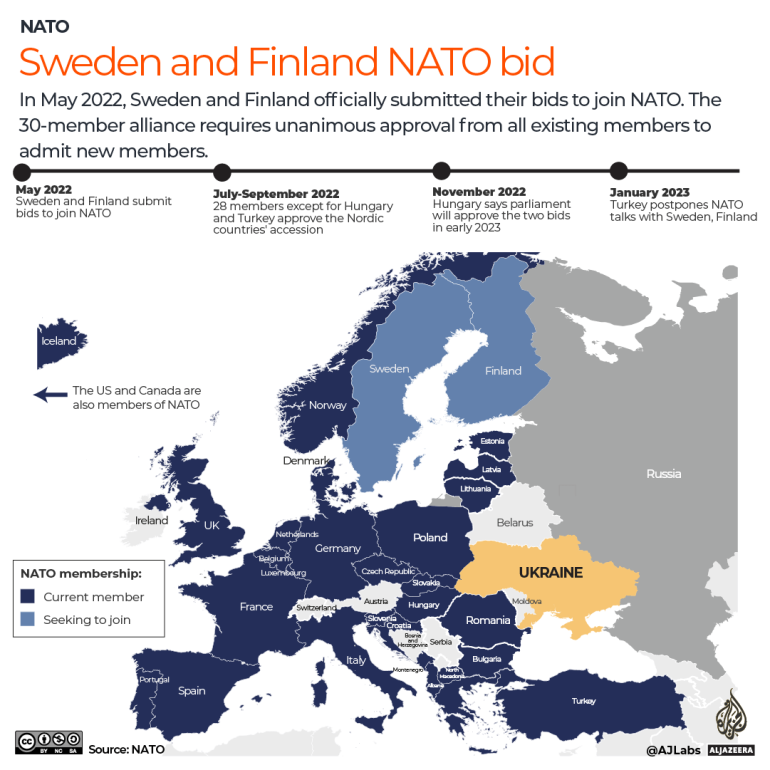
How much aid have NATO members sent to Ukraine?
According to the latest data from the Kiel Institute for the World Economy, a German think tank, NATO members committed at least 75.2 billion euros ($80.5bn) in financial, humanitarian and military aid between January 24 and November 20, 2022.
At 47.8 billion euros ($51.2bn) in commitments, the US is Ukraine’s biggest contributor, with at least 22.9 billion euros ($24.5bn) going towards military pledges, 15.05 billion euros ($16.1bn) in financial aid and 9.9 billion euros ($10.6bn) in humanitarian assistance.
Military assistance includes weapons, equipment and financial aid for the Ukrainian military. Humanitarian relief covers medical, food and other items for civilians, while financial assistance comes in the form of grants, loans and guarantees.
The UK is the second-highest NATO member contributor with 7.1 billion euros ($7.6bn) pledged to Ukraine, while Germany is third at 5.4 billion euros ($5.8bn).
Non-members Sweden and Finland have committed at least 810 million euros ($867m) and 310 million euros ($332m), respectively.
Since November 20, the US and other countries have pledged additional military packages to Ukraine. The chart below provides a detailed breakdown of how much each NATO member country has committed to Ukraine.
Which weapons have NATO members provided Ukraine?
Since the start of the war on February 24, NATO member countries have sent both conventional weapons as well as more advanced equipment and weaponry to Ukraine.
These include:
- Westland Sea King helicopters
- IRIS-T air infrared-guided air defence systems
- Javelin anti-tank missiles
- Howitzers
- Switchblade drones
- High mobility artillery rocket systems (HIMARS)
- National Advanced Surface-to-Air Missile Systems (NASAMS)
- T-72 tanks and missiles
- Next-generation light anti-tank weapons (NLAWs)
- Multiple launch rocket systems (MLRS)
- Caesar self-propelled guns
- Leopard 1 and 2 tanks
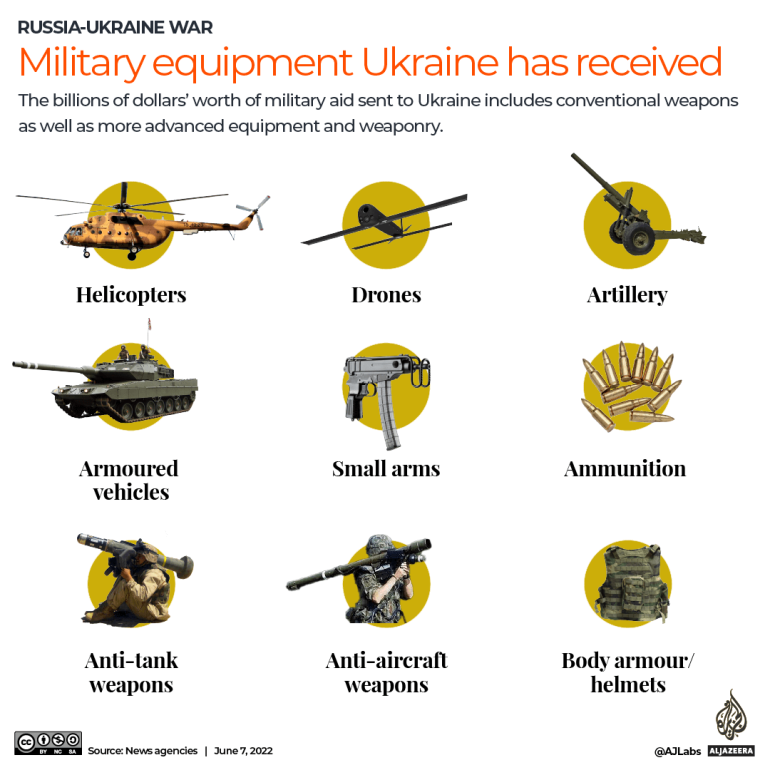
Modern tanks and advanced fighter jets
In January, the US, UK and Germany each pledged to send modern main battle tanks to Ukraine. The UK said it would deliver 14 of its Challenger 2 tanks, Germany agreed to send 88 Leopard tanks, and the US said it would send dozens of its M1 Abrams to bolster the country’s war effort.
Analysts say the latest-generation main battle tanks are vital for Ukraine in order to punch holes in Russian defensive lines and retake territory that Russian forces seized in the opening weeks of the invasion.
Southern Ukraine is flat and ideal tank territory. Russia has been building rows of trenches and fortified bunkers to stop a Ukrainian advance in the area.
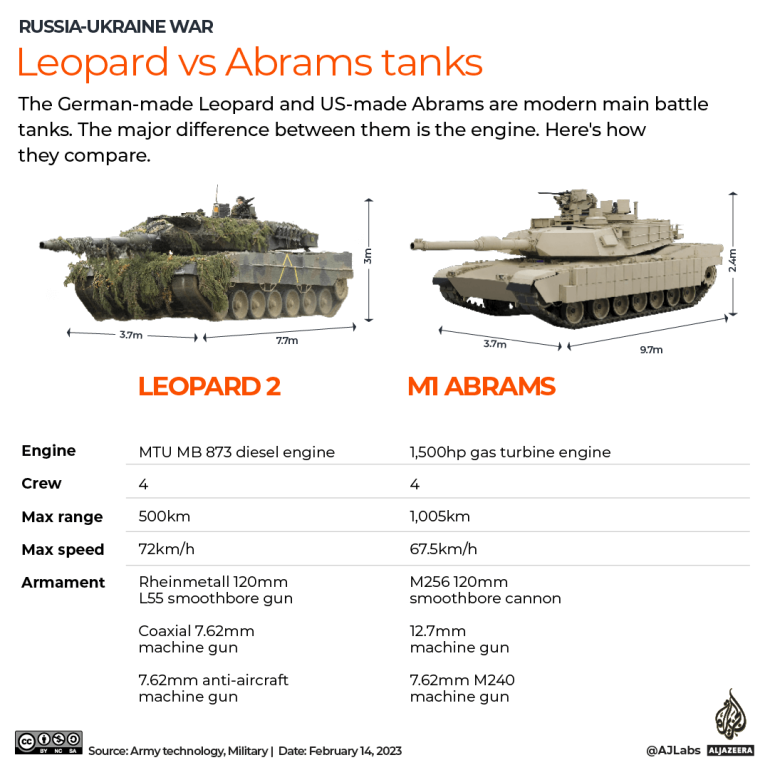
In addition to tanks, Ukraine has also been pushing for Western fourth-generation supersonic fighter jets, including the US-made F-16.
Ukraine’s air force has a fleet of ageing Soviet-era aircraft that came off the assembly line before it even declared independence more than 31 years ago. The jets are used for intercept missions and to attack Russian positions.
The UK, US and France have not ruled out sending fighter jets to Ukraine, though Germany has.
German Chancellor Olaf Scholz said there was no chance of fighter jets being sent to Ukraine. Scholz said Western allies would keep supporting Ukraine, but he also highlighted the danger of further inflaming the conflict.
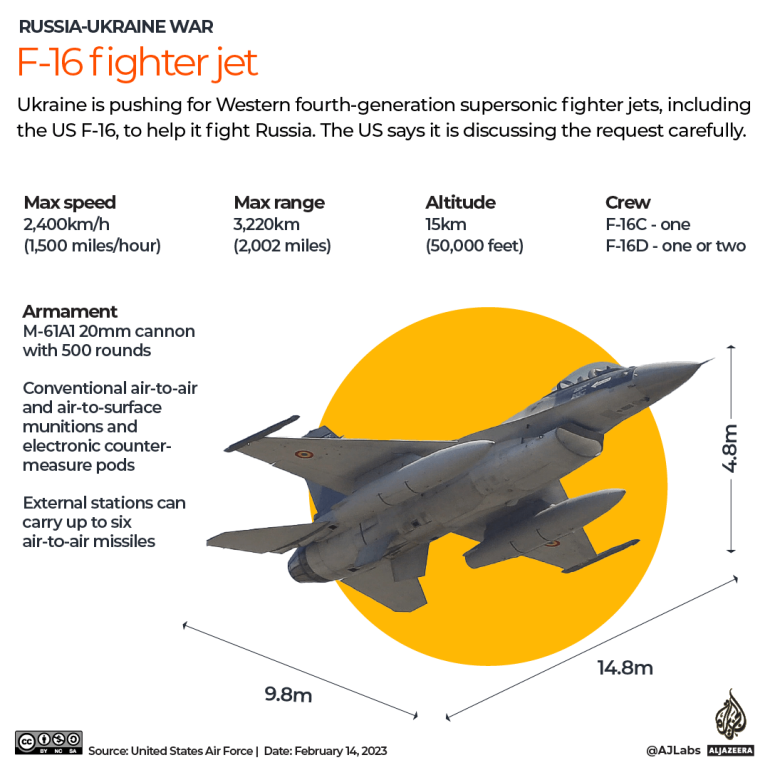
NATO and its allies have also trained tens of thousands of Ukrainian troops, including special forces.
Ukraine has long expressed interest in joining NATO. In 2019, it adopted a constitutional amendment to pursue membership of the alliance.
While Ukraine is not expected to join NATO any time soon, in December Stoltenberg said that “Russia does not have a veto” on countries joining and that the alliance “stand[s] by that, too, on membership for Ukraine”.